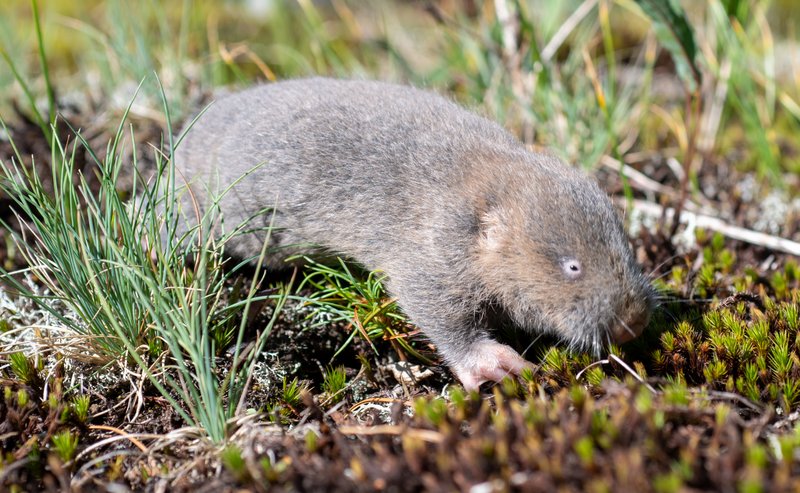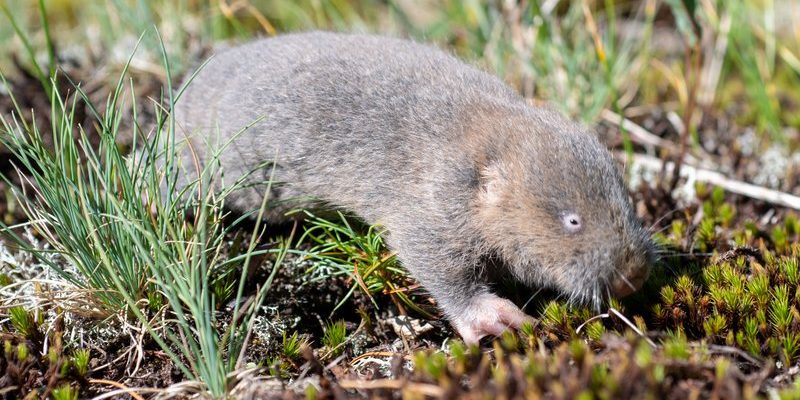
Let’s take a closer look at the Zokor, its lifestyle, and any potential risks it may pose. After all, understanding these animals is key to peaceful coexistence. You might ask, are these creatures harmless garden diggers, or do they have some hidden threats?
What Is a Zokor?
The Zokor, a burrowing rodent native to Central Asia, belongs to the family Spalacidae. They resemble oversized moles with their cylindrical bodies, short limbs, and tiny eyes, which are often hidden beneath a layer of fur. These fascinating little creatures are mainly known for their extensive underground burrowing systems. They can dig tunnels that stretch over 30 meters long!
You might be wondering why they spend so much time underground. Well, Zokors primarily inhabit grasslands and steppes, where they find abundant food sources, such as roots and tubers. Their burrowing habits not only help them find food but also provide safety from predators. It’s like building a cozy little house where they can enjoy their meals without worrying about becoming someone else’s lunch.
When you think of Zokors, picture a tiny, furry engineer, tirelessly crafting a network of tunnels beneath the surface. Their diligent work often impacts the soil and plants above, which can be both beneficial and challenging for the surrounding ecosystem.
Are Zokors Dangerous to Humans?
The big question here is whether Zokors are dangerous to humans. The short answer is: generally, no. Zokors have no direct threats to people, and they usually prefer to stay far away from human activity. They’re shy creatures that would rather dig underground than confront anything threatening.
However, that doesn’t mean we should entirely ignore them. Their burrowing habits can lead to some indirect issues. For instance, if Zokors tunnel too close to roads or fields, they might create holes that can cause accidents for unsuspecting people or livestock. Think of it like a pothole that sneaks up on you while you’re driving.
While Zokors aren’t aggressive and rarely bite, they could potentially carry parasites or diseases like any wild animal. So, it’s wise to keep your distance if you come across one in the wild. Let’s explore a few other aspects of Zokors that might raise eyebrows.
Potential Health Risks Associated with Zokors
Even if Zokors aren’t a direct threat, there are still some health risks to consider. Just like we wouldn’t want to cuddle with a raccoon because of the potential for disease, Zokors come with their own set of concerns. Here are a few points to keep in mind:
- Parasites: Zokors may carry parasites like fleas or ticks, which can transfer to humans or pets if they come in contact with them.
- Disease Transmission: In rare cases, rodents are known to harbor diseases. While Zokors are not commonly reported to spread illness, it’s always best to approach wild animals with caution.
- Ecological Impact: Their burrowing can disturb soil and plants, which might indirectly affect local agriculture or garden areas, creating frustrations for farmers and gardeners.
It’s all about awareness. While the Zokor itself is not prone to aggressive behavior, keeping a respectful distance allows everyone—Zokors included—to stay safe and sound.
Do Zokors Pose Threats to Agriculture?
You might be surprised to know that Zokors can sometimes get a bad rap in agricultural circles. While they aren’t out to destroy crops intentionally, their lifestyle can impact farming more than you might expect. Their tendency to dig can uproot plants and disrupt the soil structure.
Farmers often notice reduced crop yields in areas heavily populated by Zokors, as their burrowing can break apart root systems. Imagine spending hours nurturing a garden only to have the roots uprooted by a tiny bulldozer. This scenario can be frustrating, and it’s understandable why some might view them as pests.
To mitigate this, agricultural experts recommend using strategies like protective barriers around fields or utilizing natural predators to help manage Zokor populations. The goal isn’t to eliminate them but to find a balance that allows both farmers and Zokors to thrive.
How to Coexist with Zokors
If you happen to live in an area with Zokors, you might be wondering how to coexist peacefully. Embracing this furry neighbor can mean taking a few simple steps. Here are some tips:
- Respect Their Space: Give Zokors their room. If you see them venturing above ground, watch from a distance instead of approaching them. They’re shy and will retreat if they sense danger.
- Monitor Your Garden: If you notice holes or signs of digging, assess the situation. You might need to reinforce your garden with barriers or select plants less appealing to Zokors.
- Educate Yourself and Others: Understanding Zokors can lead to more harmonious living. Share what you learn with neighbors, so everyone can adapt accordingly.
Coexisting with wildlife can be a rewarding experience, fostering a deep appreciation for nature and its quirks. Remember that each creature, even the Zokor, plays a role in the ecosystem.
So, can the Zokor be dangerous to humans? The answer leans more toward “not really.” These little burrowing creatures may create some challenges, but they’re not out to harm anyone. By respecting their territory and being mindful of any potential health risks, you can enjoy the wonders of nature without fear.
Just as every creature has a purpose, Zokors contribute to the ecosystem in their own way. They remind us that even the seemingly small and harmless can add to the rich tapestry of life on Earth. Embracing this perspective might just help us live in harmony with all of nature’s incredible inhabitants.

